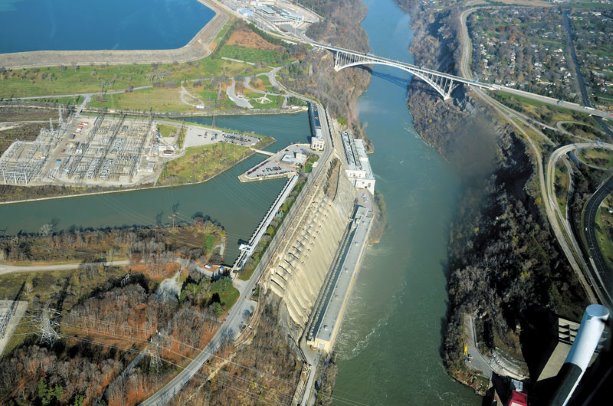The first provincial security advisor for Ontario is tackling the job of protecting the province’s critical infrastructure with more than 30 years of top-level national security experience behind him, but he acknowledges the biggest threats he will be facing are just a few years old — and changing every day.
Ray Boisvert started work Jan. 2 after a quarter century at the Canadian Security Intelligence Service (CSIS) and other stints with the RCMP and lately his own consulting firm. He describes his mandate as open-ended — to consider any and all national security issues through the lens of provincial security, with a dead focus on "protecting critical infrastructure, because it is the lifeblood of the province."
Boisvert says the legion of threat actors he worked to identify during his years at CSIS has expanded greatly in the past five years as cyber security had gained prominence. There’s still the worry that the province might fall victim to a "mushroom cloud," he said, but increasingly the dangers to the province’s essential systems lie through malware, criminal gangs intent on DDOS attacks — denial of service — or growing foreign-government-sponsored subversion.
"I am of the cyber warrior mind frame in that at the end of the day, there are 60 countries out there that are growing their cyber-warfare capabilities," he said. "Specifically, the most likely event in the next global conflict or even a local one will be an attack on critical infrastructure.
"And there is no doubt most areas of critical infrastructure in this country have been surveyed, mapped and targeted for destruction. That’s where my priorities are."
Asked what the role of constructors should be, Boisvert said, "As we’ve witnessed the impacts of cyber attacks from threat actors operating far offshore, insider threats involving violations from deep within an organization, terror attacks involving single or multiple shooters in high-density urban settings, we must now look to build our facilities and networks with a security-by-design approach."
In an age of "converged security" challenges, he said, we must consider architectural design, engineering solutions and building methods that take into account new realities.
"Whether it’s to protect people within or accessing facilities and residential buildings, or it’s about sustainable power and connectivity capable of repelling natural or malevolent human acts, or it’s about an ability to monitor health and safety metrics of smart buildings in real time, we must rapidly modernize our approach to design and build in a 21st-century threat environment," said Boisvert.
Critical infrastructure as discussed in security circles includes traditional infrastructure and also systems such as "extremely fragile" food and services delivery — examples include just-in-time trucking of fresh groceries and Ontario’s network of gas stations, Boisvert said. It’s also important to keep thriving industries in production such as telecommunications and the financial and biomedical sectors throughout the Greater Toronto and Hamilton Area and Kitchener-Waterloo.
Among traditional infrastructure that might be targeted, Boisvert, mentions power first as highly essential.
"You have to take a look at that, energy, nothing operates without power," he said. "All of us have memories of the 2003 power outage in pretty pristine conditions in July. Imagine what would happen if that happened right now.
"Next, transportation, and you think how broad that is. From the airline industry to freight rail to commuter traffic — my understanding is there are 200,000 people that come and go out of Union Station every day."
Boisvert sees his job as anticipating who the threat actors are and how they act, then working "situationally" to prevent them from acting or, failing that, identifying the threat and minimizing the outcome. Just in the past year — even since he started the job — there are new "disruptors" his team has to assess.
Examples cited include the new U.S. administration, "complexities in the European construct," cyber attacks on the Ukraine electrical grid and attempts to disrupt businesses through ransomware.
Cyber threats are even more potent given that most firms today are heavily digital, said Boisvert, which adds significantly to their value. Disruption of one floor of Google Canada offices is vastly different than one floor of a garment factory in a bygone era.
"There’s a quote I always love, from Jeff Immelt, the CEO of GE, that if you went to bed last night as an industrial company you woke up this morning as an information technology firm," he said. "Everything we do runs through the pathways of the Internet, communication and cyber and data, we are in the age of big data, to use a cliche. Then you add the Internet of Things.
"So cyber is part of our mandate and we’re looking to be working closely with the CIO (Chief Information Officer) of the province and private stakeholders and private owners of critical infrastructure."

1/2
Ontario’s first security advisor Ray Boisvert identifies power and transportation as two significant critical infrastructure systems his office is tasked with protecting. Pictured, Ontario Power Generation hydro infrastructure and the Queenston Lewiston Bridge border crossing in Niagara.
Photo: SHANKER S. FLICKR C.C. 2.0
2/2
Protecting critical infrastructure is the top priority for Ontario’s first security advisor. Pictured





Recent Comments
comments for this post are closed